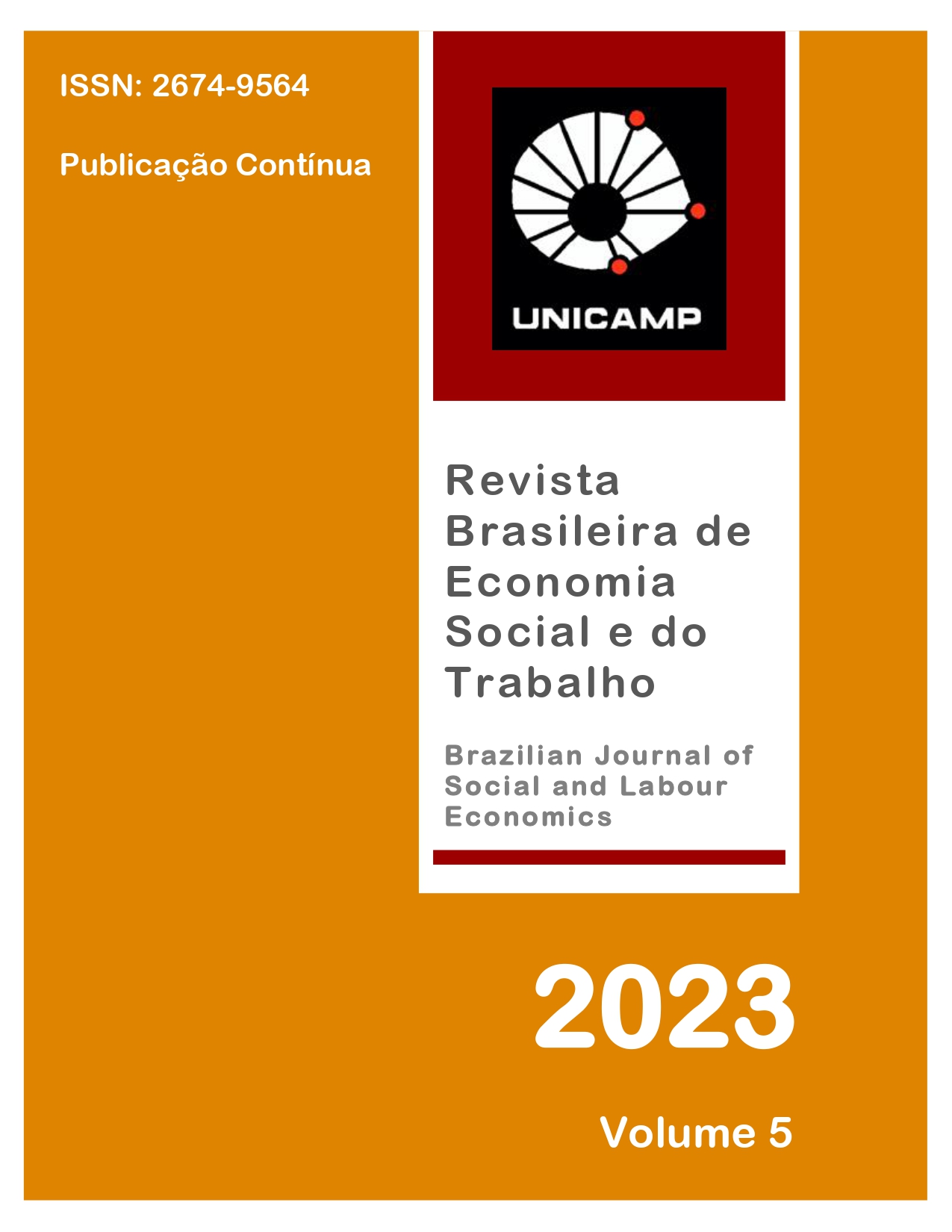Resumo
Nos países nórdicos – Dinamarca, Finlândia, Islândia, Noruega e Suécia – o Estado assumiu um papel mais contundente no atendimento das necessidades das pessoas em substituição ao mercado e à família na provisão de bens e serviços por meio da mobilização da política econômica e da política social. Esse processo avançou após a Segunda Guerra Mundial, mas perdeu força a partir da década de 1970, sobretudo depois da crise financeira de 2008 e da crise migratória de 2015. Ainda que os países nórdicos continuem em uma posição muito mais favorável que outros países, a maior resistência em mobilizar a política econômica e a política social se refletiu na deterioração das condições do mercado de trabalho, incluindo o aumento dos empregos com contrato de trabalho atípico, o aumento dos que precisam recorrer a mais de um emprego, a piora das condições de trabalho, a elevação do desemprego e o aumento da duração do desemprego. Ainda que todos na força de trabalho tenham sido afetados, os homens, geralmente jovens, os com menor escolaridade e os estrangeiros foram os grupos mais prejudicados nesse processo.
Referências
Abrahamson, P. (1999). The Scandinavian model of welfare. In P. Abrahamson (Org.), Comparing social welfare systems in Nordic Europe and France (pp. 31-60). MiRe-DREES.
Alestalo, M., & Kuhnle, S. (1986). The Scandinavian route: Economic, social and political developments in Denmark, Finland, Norway and Sweden. International Journal of Sociology, 16(3), 1–38. https://doi.org/10.1080/15579336.1986.11769909
Andersen, S., Dølvik, J., & Ibsen, C. (2014). Nordic labour market models in open markets. [ETUI Report, n. 132], European Trade Union Institute. https://www.etui.org/publications/reports/nordic-labour-market-models-in-open-markets
Bjørnson, Ø. (2001). The social democrats and the Norwegian welfare state: Some perspectives. Scandinavia Journal of History, 26(3), 197–223. https://doi.org/10.1080/034687501750303855
Careja, R., Elmelund-Præstekær, C., Klitgaard, M., & Larsen, E. (2016). Direct and indirect welfare chauvinism as party strategies: An analysis of the Danish People’s Party. Scandinavian Political Studies, 39(4), 435–457. https://doi.org/10.1111/1467-9477.12075
Christiansen, N. (2006). The Nordic model of welfare: A historical reappraisal. University of Copenhagen Press.
Christiansen, N., & Petersen, K. (2001). The dynamics of social solidarity: The Danish welfare state, 1900-2000. Scandinavia Journal of History, 26(3), 177–196. https://doi.org/10.1080/034687501750303846
Clauwaert, S., Schömann, I, Büttgen, N., & Rasnača, Z. (2012). The crisis and national labour law reforms: A mapping exercise. [ETUI Working Paper, 2012.04], European Trade Union Institute. https://www.etui.org/publications/working-papers/the-crisis-and-national-labour-law-reforms-a-mapping-exercise
Erikson, R., Hansen, E., Ringen, S., & Uusitalo, H. (Eds.) (1987). The Scandinavian model: Welfare states and welfare research. M. E. Sharpe.
Esping-Andersen, G. (1990). Three worlds of welfare capitalism. Princeton University Press.
Esping-Andersen, G., & Korpi, W. (1987). From poor relief to institutional welfare states: The development of Scandinavian social policy. International Journal of Sociology, 16(3), 39–74. https://www.jstor.org/stable/20629942
Flora, P. (1986). Growth to limits: The western European welfare states since World War II (Vol. 1: Sweden, Norway, Finland and Denmark). Walter de Gruyter.
Grundfelder, J., Rispling, L., & Norlen, G. (Eds.) (2018). State of Nordic region 2018. Nordic Council of Ministers. https://norden.diva-portal.org/smash/get/diva2:1180241/FULLTEXT01.pdf
Jonsson, G. (2001). The Icelandic welfare state in the twentieth century. Scandinavia Journal of History, 26(3), 249–267. https://doi.org/10.1080/034687501750303873
Kananen, J. (2014). The Nordic welfare state in three eras: From emancipation to discipline. Ashgate.
Kangas, O., & Kvist, J. (2019). Nordic welfare states. In B. Greve (Org.), Routledge handbook of the welfare state (2nd ed., pp. 124-136). Routledge.
Kangas, O., & Palme, J. (Eds.) (2005). Social policy and economic development in the Nordic countries. Palgrave MacMillan.
Kautto, M. (2010). The Nordic countries. In F. Castles, S. Leibfried, J. Lewis, H. Obinger, & C. Pierson (Orgs.), The Oxford handbook of the welfare state (pp. 586-600). Oxford University Press. https://doi.org/10.1093/oxfordhb/9780199579396.003.0040
Kautto, M., Fritzell, J., Hvinden, B., Kvist, J., & Uusitalo, H. (Eds.) (2001). Nordic welfare states in the European context. Routledge.
Kautto, M., Heikkilä, M., Hvinden, B., Marklund, S., & Ploug, N. (Eds.) (1999). Nordic social policy: changing welfare states. Routledge.
Kautto, M., & Kvist, J. (2002). Parallel trends, persistent diversity: Nordic welfare states in the European and global context. Global Social Policy, 2(2), 189–208. https://doi.org/10.1177/1468018102002002741
Kettunen, P. (2001). The Nordic welfare state in Finland. Scandinavia Journal of History, 26(3), 225–247. http://dx.doi.org/10.1080/034687501750303864
Kolberg, J. & Esping-Andersen, G. (1991). Welfare states and employment regimes. International Journal of Sociology, 21(3), 3–35. https://www.jstor.org/stable/20630064
Kuhnle, S. (1978). The beginnings of the Nordic welfare states: Similarities and differences. Acta Sociologica, 21(1 suppl.), 9–33. https://doi.org/10.1177/000169937802101s02
Kuhnle, S., & Horst, S. (2004). The developmental welfare state in Scandinavia: Lessons for the developing world. [Social Policy and Development Programme Paper, n. 17], United Nations Research Institute for Social Development (UNRISD). https://cdn.unrisd.org/assets/library/papers/pdf-files/kuhnle.pdf
Kvist, J., Fritzell, J., Hvinden, B., & Kangas, O. (Eds.) (2012). Changing social equality: The Nordic welfare model in the 21st century. Policy Press.
Lundberg, U., & Åmark, K. (2001). Social rights and social security: The Swedish welfare state, 1900-2000. Scandinavia Journal of History, 26(3), 157–176. https://doi.org/10.1080/034687501750303837
Madsen, P. (2007). Flexicurity: a new perspective on labour markets and welfare states in Europe. Tilburg Law Review: Journal of International and Comparative Law, 14(1-2), 57–79. https://doi.org/10.1163/221125907X00056
Stephens, J. (1996). The Scandinavian welfare states: Achievements, crisis and prospects. In G. Esping-Andersen (Org.), Welfare states in transition: National adaptations in global economies (pp. 32-65). Sage Publications.
Wilthagen, T., & Tros, F. (2004). The concept of flexicurity: a new approach to regulating employment and labour markets. European Review of Labour and Research, 10(2), 166–186. https://doi.org/10.1177/102425890401000204
Wolf, P. J. W. (2019). O projeto de integração regional e os estados de bem-estar social da Europa Ocidental: análise do período recente (2008-2016). (Tese, Doutorado em Ciências Econômicas). Instituto de Economia, Universidade Estadual de Campinas, Brasil, http://repositorio.unicamp.br/Acervo/Detalhe/1089590

Este trabalho está licenciado sob uma licença Creative Commons Attribution-NonCommercial-ShareAlike 4.0 International License.
Copyright (c) 2023 Paulo José Whitaker Wolf


